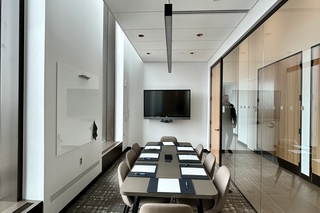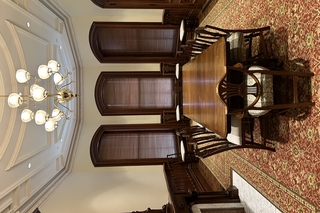Choosing the right layout for your event can make all the difference in attendee engagement and flow. Whether it’s an academic symposium, VIP dinner, or board meeting, the setup you select should match the purpose of your event. Here are some tips to help you make the best choice:
Choosing the perfect event layout: Tips for meetings, dinners, and more
All day meetings
Symposiums
For all day meetings that require formal research presentations, consider choosing a space that has an existing tiered auditorium or theater setup. This allows for all attendees to have a clear sightline to the front of the room to ensure that they can give presenters and panelists their full attention.
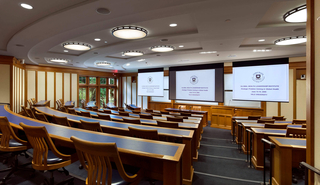
The Auditorium at the Greenberg Conference Center
Breakout spaces
Collaboration and working groups are often a large part of all day meetings. To encourage participation and allow for productive group work, choose a venue that offers multiple breakout spaces. These smaller meeting spaces should ideally be set up to allow 8-15 attendees a seat at the table – a traditional conference room or small hollow square setup is ideal so that all participants can hear and see one another clearly.
Small conference rooms at Kline 14 and Betts House
Encouraging collaboration/workshops
For events that require audience participation and collaboration during presentations, opt for seated rounds or crescent rounds. These setups allow attendees to talk amongst themselves and get to know each other throughout the day. Consider placing a tabletop microphone at each table to give attendees an easy way to ask questions and engage with presenters.
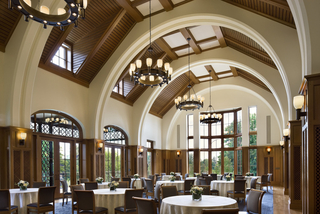
Seated rounds at the Greenberg Conference Center
Considerations for accessibility
No matter which setup you choose for your all-day meeting, be sure to set aside a quiet, private space for attendees who may need to step away throughout the day.
Seated dinners
Large events
For large dinners, both formal and informal, opt for seated rounds, with no more than 10 attendees at each table. This setup allows attendees to see and hear everyone at their table and provides ease of access for servers and catering staff to move around the space as they serve the meal and bus tables afterward.
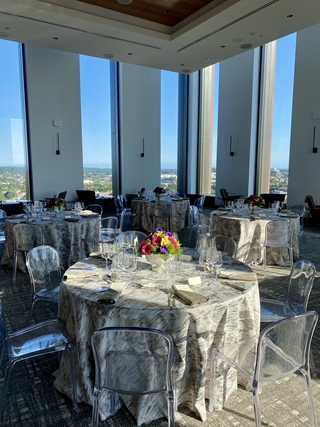
Seated rounds at Kline 14
Intimate events
For smaller, more intimate dinners, consider a family style banquet setup! This casual layout is designed to make attendees feel at home and encourage them to bond as they share a meal together.

Family style banquet tables at Kline 14
Receptions
Formal
For formal receptions, opt for a mixture of seated round tables and standing cocktail tables. If you are working with a smaller space, seated bistro tables in place of rounds are a great option. A mix of seated and standing options allows for attendees to move around the room and encourages networking. Don’t forget to include a bar!
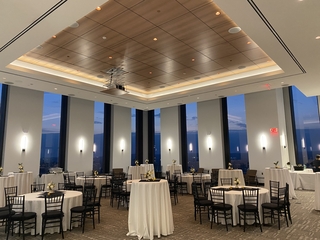
Formal reception setup at Kline 14
Casual
Including soft furnishings in your event setup is a great way to create a space that has a more casual feel.
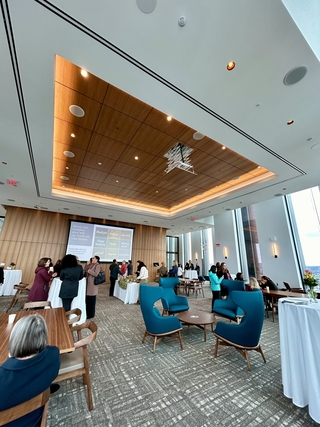
Mixed reception setup with soft furniture at Kline 14
Board meetings
Open U
For larger board meetings that require participants to turn their attention to presentations or collaborate with virtual attendees, an open U shape is a great option. This setup allows all participants to have a clear sightline to a presentation at the front of the room while still encouraging collaboration.
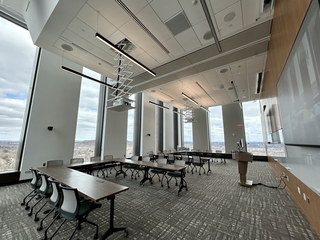
Open U setup at Kline 14
Square
For agenda-focused board meetings that are geared toward working sessions, opt for a hollow square. The hollow space in the middle will allow a group leader or moderator an easy way to navigate among the tables, and the setup facilitates easy communication and interaction among participants as they should be able to turn to face everyone around the table.
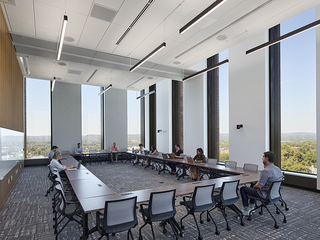
Hollow square setup at Kline 14
Traditional board table for smaller groups
For smaller board meetings, a traditional conference setup works well. When using this setup, ensure that no chairs are placed with their backs facing the screen if there will be any type of presentation or virtual component.
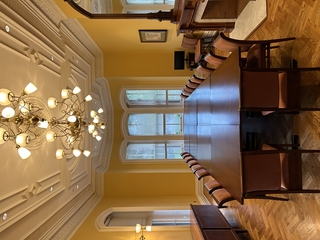
Traditional boardroom setup at Betts House
Note on hybrid setups
When setting up for hybrid events, be sure to keep in mind that all attendees will need to be able to view the screen in order to collaborate with the virtual attendees. This can be accommodated through setups like hollow u-shapes, crescent rounds, or theater style seating.
